Dear Fellow Communicators,
We are excited to announce our outreach campaign for the La Silla Total Solar Eclipse in 2019! We have prepared a series of activities on site in Chile and online that will allow you to enjoy this fantastic natural phenomenon.
On 13 July we opened the sale of tickets for the 300 available places to view the eclipse from ESO’s La Silla Observatory in Chile. They disappeared surprisingly fast, but if you did not manage to get a ticket, we have a few other opportunities for you:
-
On the occasion of the eclipse, we are organising the second #MeetESO social media gathering. Several lucky social media enthusiasts will get free entrance tickets to La Silla Observatory to witness the Total Solar Eclipse — #LaSillaTSE.
-
If you are a national of an ESO Member State, you can win a trip to La Silla to witness the total solar eclipse.
-
Media representatives can apply for the limited number of free media passes at La Silla Observatory.
-
ESO will offer a number of Chilean students and elderly people the unique opportunity to witness the total solar eclipse from La Silla for free.
-
We plan to stream the event online and host events in locations throughout Europe, including the ESO Supernova Planetarium & Visitor Centre in Garching bei München, Germany.
We plan to issues calls for each of these activities, so follow our dedicated webpage, subscribe to our newsletter and look for our messages on social media via #LaSillaTSE.
While we are talking about eclipses: If you are based in Munich, we invite you to witness the longest total lunar eclipse of the 21st century. Come to the ESO Supernova on 27 July and take part in our dedicated activities. Check out availability and book your tickets.
Let’s reach new heights in astronomy together!
Lars Lindberg Christensen (lars@eso.org)
Head, ESO education and Public Outreach Department (ePOD)
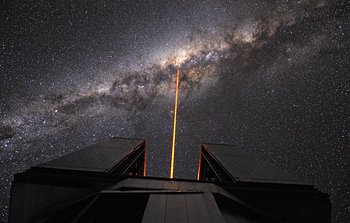
|
24 July 2018: ESO will hold a press conference on 26 July 2018 at its Headquarters in Garching, Germany, to present unique observations of the centre of the Milky Way and their significance ...
|
| Read more |

|
11 July 2018: Over the past months, the ESO Supernova team has been preparing an amazing new programme of exciting events and shows for our Planetarium & Visitor centre. We are delighted to ...
|
| Read more |
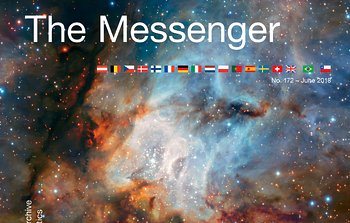
|
29 June 2018: The latest edition of ESO's quarterly journal, The Messenger, is now available online. Find out the latest news from ESO on topics ranging from new instruments to the latest ...
|
| Read more |
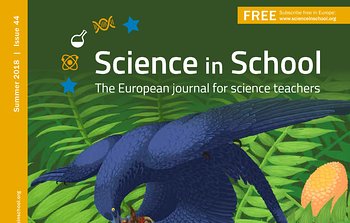
|
26 June 2018: The latest issue of the free magazine Science in School is now available online and in print. This European journal for science teachers offers up-to-date information on cutting-edge science, teaching ...
|
| Read more |
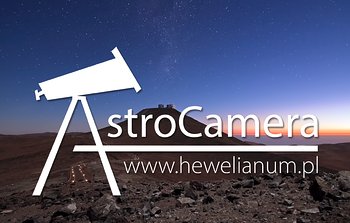
|
19 June 2018: The winners of this year’s AstroCamera competition have been announced. Polish astrophotographer Andrzej Fijołek is the winner in the Deep Sky Objects category for his spellbinding image of the ...
|
| Read more |

|
Interview with: Paolo Padovani
12 July 2018: In the ice of Antarctica, a detector went off. It found a neutrino — a tiny, nearly massless particle. Observatories were notified and scientists began monitoring the area. They soon ...
|
| Read more |
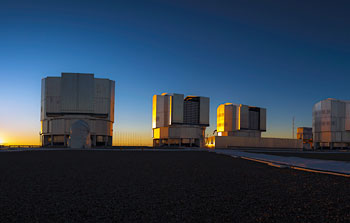
|
Interview with: Steffen Mieske
6 July 2018: Since the Paranal Observatory opened in May 1998, it has become one of the most productive observatories in the world. The observatory houses the Very Large Telescope (VLT), ESO’s premier ...
|
| Read more |
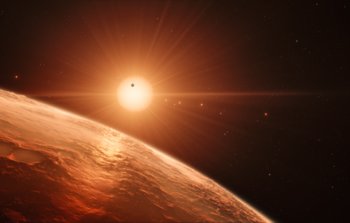
|
Interview with: Matias Jones
29 June 2018: Ever since the first detection of a planet orbiting a pulsar in 1992, astronomers have been keenly searching for more, driven by perhaps the most profound question for humanity: is ...
|
| Read more |

|
Interview with: Jens Hoeijmakers
22 June 2018: Exoplanets have fast become a huge research area and astronomers are now trying to study their atmospheres. The possibility of finding an exoplanet with an atmosphere that may be able ...
|
| Read more |

|
18 July 2018: ESO’s Very Large Telescope (VLT) has achieved first light with a new adaptive optics mode called laser tomography — and has captured remarkably sharp test images of the planet Neptune, ...
|

|
11 July 2018: New observations with ESO’s Very Large Telescope have revealed the star cluster RCW 38 in all its glory. These observations was taken during testing of the HAWK-I camera with the ...
|

|
2 July 2018: Astronomers using the SPHERE instrument on ESO’s Very Large Telescope captured the first clear image of a planet caught in the act of forming in the dusty disc surrounding a ...
|

|
29 June 2018: Near Earth Objects (NEOs) are bodies in the Solar System with orbits that can bring them into close proximity with the Earth. Every day, many of these objects collide with ...
|

|
27 June 2018: Astronomers have found that ‘Oumuamua, the first interstellar object discovered in the Solar System, is moving away from the Sun faster than expected. Using data from ESO’s Very Large Telescope, ...
|

|
21 June 2018: Astronomers have made the most precise test ever of general relativity outside the Milky Way.
|

|
19 June 2018: Each year, several outstanding early-career scientists have the opportunity to further develop their independent research programmes at the European Southern Observatory. Fellowships are available both at ESO’s Headquarters in Garching ...
|
|
|
|
|